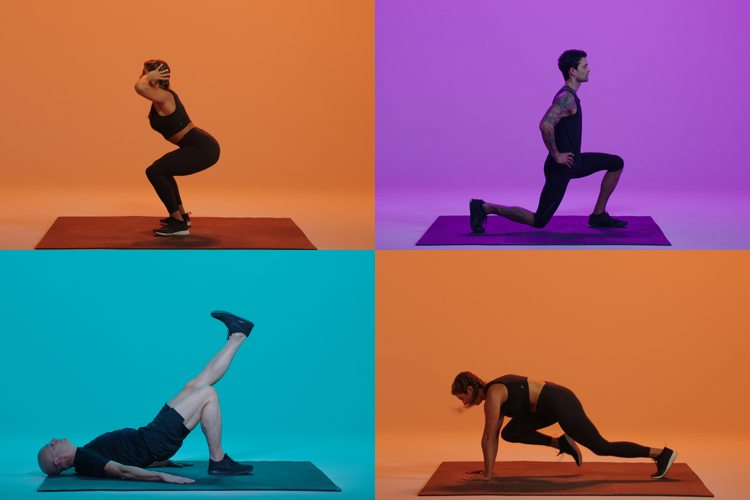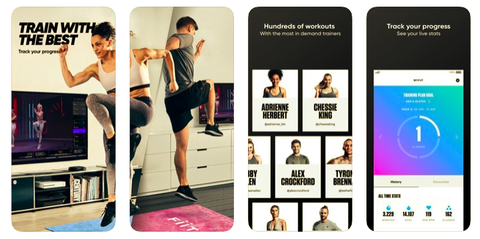
It is possible to be confused about how much room you require when buying running shoes. Your feet should be able to move freely and not slip uncontrollably. When purchasing a new pair, two things to be aware of are the toe width and the heel fit. Uncontrollable slippage or popping out shoes are unacceptable.
Toe-box length
Running shoes must be long enough to accommodate your toes. A shoe that fits well with a large toe box can reduce the risk of blisters. Swelling can also affect the length of your toe box. You can either use toe socks or tape your toes to get an idea of how much space is required in the toebox.
The toe box length of running shoes should be approximately one thumb length longer than the length of your longest toe. For some, this may be the second or third toe. For your foot's freedom to move when running, you need this extra space. Shoes that are too tight can lead to blisters or rubbing.
Heel fit
When buying a new pair of running shoes, it's important to find a pair with extra room for your toes. The shoe's toe-box should be approximately a thumb's breadth wider than the longest toe. This is essential because your feet need to be free while running, and the shoe should allow for some extra space.

It is important to have the correct size socks for your new shoes. The socks should not be too thick as they can interfere with your fit. You should also remember that your foot can swell during the day so you may want to try the shoes on in afternoon rather than in morning. The toe box should not be too small and the heel should slide easily.
Toe-box width
The toe-box width of running shoes should be about one thumbnail width longer than the longest toe on your foot. Some people have long toes and will need extra room. This extra room will allow your foot to spread out more when you run. You also need a little extra room in your toe box because your feet may swell after running.
The width of your toebox will determine which type of running shoes are best for you. Shoes with narrow toeboxes will have less room for your feet and may rub against the sides. You will have more room around your toes as well as the ball of you foot if your toes are larger.
Shoe width
One of the most important questions you need to ask yourself when buying running shoes is, "How much room is in your running shoe?" The shoe's proper size should allow you to leave half of your thumb space between your longest toe and its end. This will help prevent the shoe from slipping and causing your heels to pop out when running. The shoe should fit comfortably without pinching your heel or toes.
Take off your insoles and measure the shoe. Next, put socks on and try the shoe on. It will feel comfortable if the shoe fits comfortably with socks. Also, if you have bunions, you'll want a shoe with more room for your toes.

Heel slippage
You've probably experienced heel slippage at some point. It can happen when you're walking and running. Fortunately, there are a few ways to fix heel slippage, including choosing a proper fitting pair of shoes and wearing the right socks.
The most common way to avoid heel slippage is to wear a shoe that fits your foot properly. Ideally, a pair of running shoes should have about a thumb's width of room around the heel, but be sure to allow some wiggle room. This will make the shoe more resilient to impact and help prevent slippage. Remember that shoes do not fit in the exact same way on all feet. Therefore, you may need time to break them in.
FAQ
What happens if I don’t get enough sleep?
Insufficient sleep can cause your brain to not receive the signals necessary for hormone regulation and other chemicals involved in controlling appetite and metabolism. In turn, this can cause you to eat more and gain weight. Overeating can also be caused by a lack of sleep.
Is it safe and legal to exercise in cold conditions?
It's a good idea to exercise outside as often as possible. However, the temperature of the air is not the only thing that can determine whether you are safe to exercise outdoors. Wind speed, humidity, precipitation, and visibility also play a role. Layers of clothing should be worn if you are exercising outside in inclement temperatures.
Can I eat while I exercise?
Yes. Yes. Choose low-calorie snacks like watermelon. These foods provide nutrients that improve your performance during exercise.
Statistics
- Adolescent girls were less active than adolescent boys, with 85% vs. 78% not meeting WHO recommendations of at least 60 minutes of moderate to vigorous intensity physical activity per day. (who.int)
- An estimated 110,000 deaths per year could be prevented (cdc.gov)
- In high-income countries, 26% of men and 35% of women were insufficiently physically active, as compared to 12% of men and 24% of women in low-income countries. (who.int)
- In 2018, the World Health Assembly agreed on a global target to reduce physical inactivity by 15% by 2030 and align with the Sustainable Development Goals. (who.int)
External Links
How To
How to Stay Fit at Age 40
This article will help those over 40 who want to maintain a healthy body. It provides some basic advice about how to eat right and exercise well as how to take care of your mental wellbeing. This article will give you tips on living longer and healthier.
-
Eat Right - You should eat right when you want to be healthy. Avoid processed foods and opt instead for whole grains, fruits and vegetables, lean meats and fish, as well as nuts, seeds and beans. Don't be afraid to change your diet if the food you are eating is not what you prefer. You won't lose weight if you don't eat as much. Instead, start adding small amounts of new things into your daily meals. If you eat chicken breast most of the time, try turkey one week. If you are a fan of pasta, rice is a good option. Try to incorporate these types of foods into your diet so that they become part of your everyday life.
-
Exercise - Workout at least 3 times per week. Include cardio activities like running, swimming, biking and dancing. Make sure to get enough rest. It is recommended that you sleep for at least 8 hours each night. In addition, make sure you drink plenty of water during the day. You should aim to consume 2 liters (0.5 Gallons) of water per day.
-
Get enough sleep to stay healthy. According to the National Sleep Foundation adults need 7-8 hours of sleep per day to maintain their optimal physical and emotionally healthy. Most people get less than 6 hours sleep each night. You might consider changing your sleeping patterns if you feel tired all day. Adjusting your schedule to go to bed earlier and waking up later will allow you to catch up on extra sleep. Turn off your phone prior to going to bed to help you wind down and relax. Avoid caffeine after noon as it can cause insomnia.
-
Take care of your mental health - It is essential to take good care of your mind in order to keep your body healthy. Stress can lead people to have poor eating habits or make poor lifestyle choices. Therefore, it's important to make sure that you practice stress management techniques such as meditation, yoga, breathing exercises, and relaxation techniques. Do something that is enjoyable for at least an hour. This could mean taking a walk outside, playing sports, reading a book, listening to music, watching TV, etc.
These four tips will help you live longer, and be healthier. These simple steps will help you achieve your fitness goals.